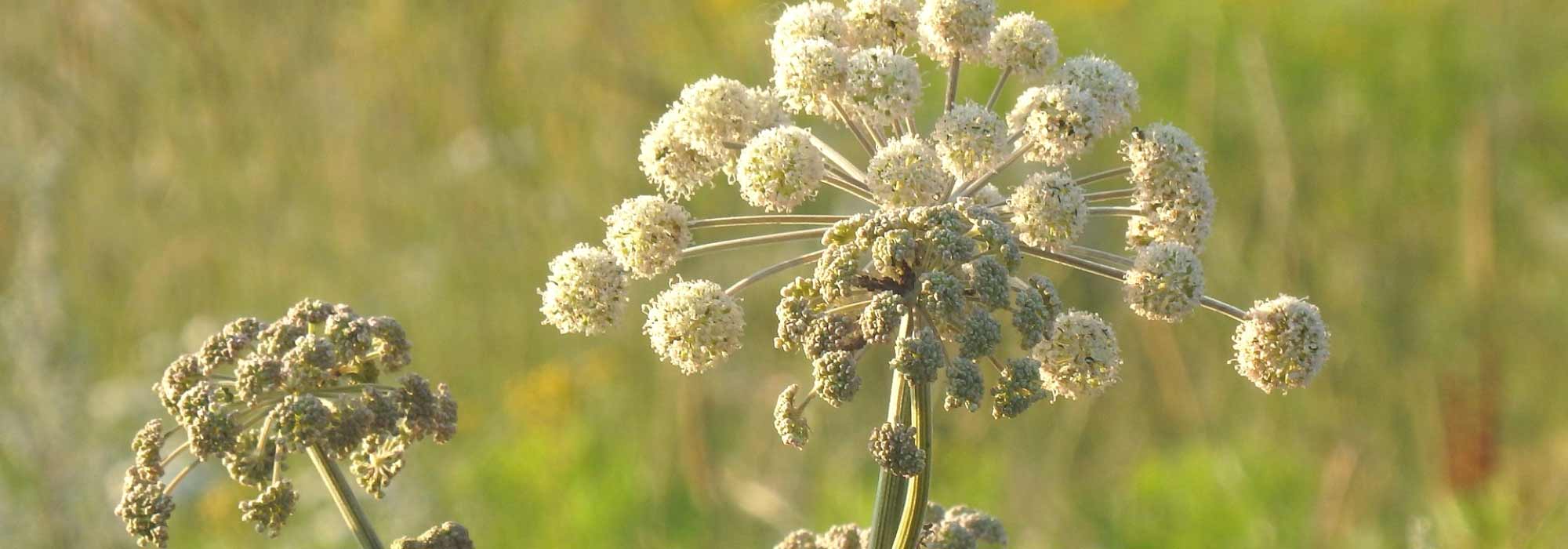
Angelica: sowing, planting and care
Summary
Angelica in a nutshell
- A giant umbellifer, Angelica offers an elegant, architectural flowering that is always spectacular
- It is a biennial plant, ornamental, medicinal and aromatic, highly prized when candied for pastries and confectionery
- It especially favours rich, moist soil
- Hardy, it tolerates wet, harsh winters
- Indispensable in vegetable garden, it also has its place in beds and borders that do not dry out, or in cool, moist woodland
A word from our expert
Well known as a culinary plant for its very aromatic stem, candied in sugar, and for its root with therapeutic properties from which an essential oil widely used in homeopathy is extracted, Angelica is also a majestic, highly ornamental biennial plant!
But there is not only Angelica archangelica, the officinal angelica much prized for its benefits and for flavouring cakes! From Angelica gigas with its large purple flowers to wild angelica, Angelica is a plant that never goes unnoticed.
In summer it offers a spectacular flowering in large umbels of flowers white, lime-green or red that can exceed 3 m in height.
Its silhouette, graphic and exceptionally distinguished, emblematic of English gardens, deserves to grace every corner of naturalistic gardens and meadows with a contemporary spirit.
Easy to grow, hardy, rarely troubled by disease, this beautiful short-lived perennial asks for only one thing: moisture.
It thrives in non-scorching sun or partial shade in all types of fresh to moist soils, where angelica disperses its seeds, regenerating by sowing.
Still little used in gardens, Angelica nevertheless deserves to be a star! Here is everything to know about this non-conformist biennial, essential in summer in fresh soils.
Description and botany
Botanical data sheet
- Latin name Angelica
- Family Apiaceae, Umbelliferae
- Common names Angelica, Herb of angels
- Flowering June to September
- Height 60 cm to 3 m
- Sun exposure sun, partial shade
- Soil type fresh, rich
- Hardiness -15°C to -20°C
Angelica is a biennial or an ephemeral perennial of the family Apiaceae (formerly Umbelliferae) like carrot and fennel, native to cool, damp to marshy areas of temperate regions in the Northern Hemisphere and New Zealand.
The genus includes around fifty species, among them the well-known Angelica archangelica, whose candied stems are used in confectionery and baking and in herbal medicine. Beyond this cultivated species, there is Angelica Gigas or red angelica, which can reach 1.5 m, Angelica pachycarpa with its surprising glossy foliage, Angelica atropurpurea with red stems, and Angelica sylvestris, wild angelica.
A short-lived plant, angelica regenerates by self-sowing to maintain its presence.
It quickly forms a generous architectural clump, sometimes reaching 2 to 3 m in flower. It develops very attractive deciduous foliage. The large leaves are alternate, bi- or tri-palmate, divided into very dissected, dentate leaflets, oblong to ovate, often diamond-shaped.
Jade-green, apple-green or green with purplish tints, they are sometimes villous underneath. Angelica pachycarpa is notable for its very glossy, puckered foliage, and Angelica archangelica for leaves that release a fresh aniseed and mint scent only when crushed.

Angelica sylvestris – botanical illustration
In spring, from this ample, sumptuous foliage rise long, sturdy flowering stems. The often aromatic, hollow, ribbed, fleshy and ramified stems, green or deep wine-red depending on variety, bear at their tips, from June to September, large rounded umbels.
Flowering rarely occurs in the year following planting, more commonly in the second or even third year, after which the plant usually dies post-flowering. Most angelicas die after flowering and fruiting because they are semelparous, but they ensure progeny by numerous self-sown seedlings.
The spectacular, spherical flower-heads, with their striking graphic form, are truly their trademark!
These globular inflorescences, measuring 12 to 25 cm in diameter, are made up of numerous small, long-petiolate flowers, white, greenish, yellow or deep purplish—almost blackcurrant in tone.
The whole plant gives off a subtle aromatic aniseed and musky scent that attracts many pollinators, including bees.
While they make impressive fresh bouquets, they are also outstanding as dried flowers.
At the end of summer, the flowers dry on the plant, transforming into seed-heads of ovoid achenes, which will feed birds during the lean season. The dried heads remain decorative late into the season.
All parts of Angelica archangelica, also called “Herb of angels”, are edible: from the roots to the petioles, especially the young stems with minty flavours that are candied in sugar to flavour biscuits and cakes — so much so that the town of Niort has made them a speciality since the 18th century.
While angelica is used in many confectionery and liqueur-making recipes, it is also recognised for its many therapeutic virtues in decoctions and infusions, notably to stimulate digestion.

Some angelicas: Angelica gigas / Angelica sylvestris / Angelica sylvestris ‘Vicar’s Mead’
Angelica owes its name, derived from “angel”, to reputed magical powers believed to protect against evil.
Fairly hardy, angelica tolerates temperatures down to -15°C. It grows in sun or partial shade and prefers fertile, fresh to moist soils. Biennial, it nevertheless self-seeds widely across mainland France.
With its large, spectacular spherical heads visible from afar, angelica brings lightness and verticality to the garden. It is indispensable in a natural garden to create graphic scenes within refined colour combinations and is much appreciated for structuring prairie-style gardens or country gardens, where it introduces vertical accents and focal points at the back of borders, in edges, in the vegetable garden alongside aromatic relatives, isolated on a short grass meadow, in woodland, or at the water’s edge.
You may also read
Biennial plants: everything you always wanted to know!Main species and varieties
Biennial plants sometimes perennial, the angelicas form a beautiful, spectacular family with an often architectural habit. From well-known garden angelica or Angelica archangelica, much prized for medicinal and aromatic properties, to Angelica Gigas or red angelica, via Angelica pachycarpa, Angelica atropurpurea, a small but reliably perennial angelica with red stems, all are hardy, easy to grow and incredibly striking!
Most popular
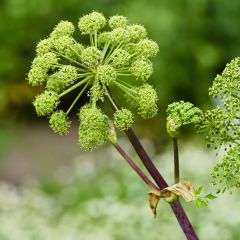
Angelica archangelica
- Flowering time july, august
- Height at maturity 1,80 m
Our favourites
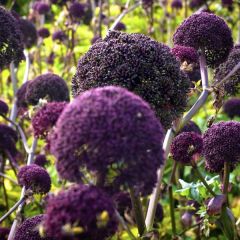
Angelica gigas
- Flowering time september, october
- Height at maturity 1,50 m
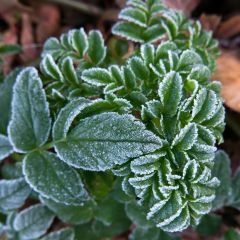
Angelica pachycarpa
- Flowering time august to october
- Height at maturity 60 cm
Discover other Angelica
View All →Available in 2 sizes
Available in 2 sizes
Available in 1 sizes
Available in 1 sizes
Available in 1 sizes
Available in 1 sizes
Available in 1 sizes
Available in 1 sizes
Planting
Where to plant Angelica?
Hardy down to at least -15°C, Angelica is a biennial plant that is easy to grow, thriving throughout France and will self-seed indefinitely if conditions suit. It is particularly at home in cool regions such as Normandy!
It prefers any good garden soil that is both rich and slightly acidic, deep, fresh to moist, clayey but not waterlogged. It grows equally well in non-scorching sun and in partial shade, though it slightly favours shaded spots. Allow plenty of space from neighbouring plants and do not move it once planted to give it time to establish, as flowering requires a little patience!
This architectural plant is a reliable feature of herbaceous borders and informal, meadow-style gardens, to which it brings a poetic movement and a structuring presence.
Plant it in groups towards the back of a large bed of perennials summer-flowering that are a little exuberant, in a mixed-border in the spirit of a country garden, in vegetable garden, or in cool woodland understorey or at a pond edge.
When to plant Angelica?
Planting Angelica is done in spring, between February and April, or in autumn, from September to November.
How to plant Angelica?
For an attractive effect, plant in groups of 3 plants per m2, spaced about 0.50 m in all directions. Once well established, allow it to develop without ever moving it as Angelica hates transplanting. Soil must be worked and loosened deeply to allow optimal development of its roots.
- Dig a hole three times the volume of the root ball
- Place Angelica plant in the centre; root ball should be level with soil surface
- Backfill with a mix of compost and soil
- Water and mulch
You may also read
Comment to create a beautiful perennial borderWhen and how to sow angelica?
Sowing is done directly in open ground in late summer. Seed viability of angelica falls sharply over months, making germination capricious; therefore sow very fresh between July and September, as soon as seeds are harvested.
Angelica requires patience…of an angel! It will produce only leaves in first year, stems and flowers will appear only in second year after planting.
In the open ground
- Sow directly in situ, in clusters of 3 or 4 seeds
- Keep moist until emergence
- After about 3 weeks, thin to leave only one young plant every metre
- Backfill with potting compost then firm with back of rake
- Water with fine spray
More tips for successful sowing of aromatic plants on our blog!
Care, harvest and pruning of Angelica
Very undemanding, angelica requires little attention once established.
It cannot tolerate lack of water or dry soils: soil must remain moist. During first springs and summers, give generous waterings, especially in drought or hot weather. By the water’s edge, no watering is necessary. To reduce waterings, from late May we recommend mulching the base with dead leaves or well-rotted compost.
At the end of autumn or in March if you want to keep plants through winter, cut back stems and dry foliage to ground level. If you do not wish to harvest the seeds or want to prevent self-seeding, remove flowers regularly before they set seed by cutting stems back to the foliage.
The plant dies after flowering, but you will very likely benefit from self-sown seedlings!
When and how to harvest Angelica archangelica
Everything can be harvested from Angelica archangelica! Only young stems are edible to be candied: harvest leaf petioles and tender shoots as needed for up to 2 years after planting. Roots are harvested in autumn from the first year. Plant in the vegetable garden!
→ Learn more about harvest and storage of Angelica in our tutorial

Angelica seed formation
Diseases and potential pests
Angelica has a few well-known enemies :
Snails and slugs that devour young shoots before they even emerge from the ground in spring; fortunately we share our secrets to tackling the damage they cause.
Harlequin bug (Graphosoma semipunctatum), this red-and-black striped sap-sucking insect, feeds on angelica flowers, merely compromising seed set : sprays of black soap should dislodge it.
Propagating
When and how to harvest seeds of angelica?
Plant sets seed at end of summer, between August and October in second or third year, self-seeding on site with very good results. However, you can try to multiply angelica yourself, bearing in mind this is an unpredictable method and that sowing must be done with fully ripe, freshly harvested seeds, as these quickly lose their germination capacity.
- Dry seeds in a cloth
- Sow thinly under cover in a seed tray filled with a free-draining mix (potting compost, sand, compost), covering seeds lightly
- Firm down
- Keep sowing slightly moist
- Thin out and pot on strongest seedlings into buckets
- Keep in warmth throughout winter
- In spring, plant out in open ground from best thinned young plants
Companion planting angelica in the garden
Spectacular, Angelica’s inflorescences give a border real substance with their very strong structural presence. Its elegant, graphic silhouette, its opulent, deeply cut foliage and its pastel or deep purple inflorescences bring a lot of lightness and charm to natural gardens or to contemporary meadows. It brings breath, poetry and colour to summer scenes in colour combinations often refined — white/green or white/purple.
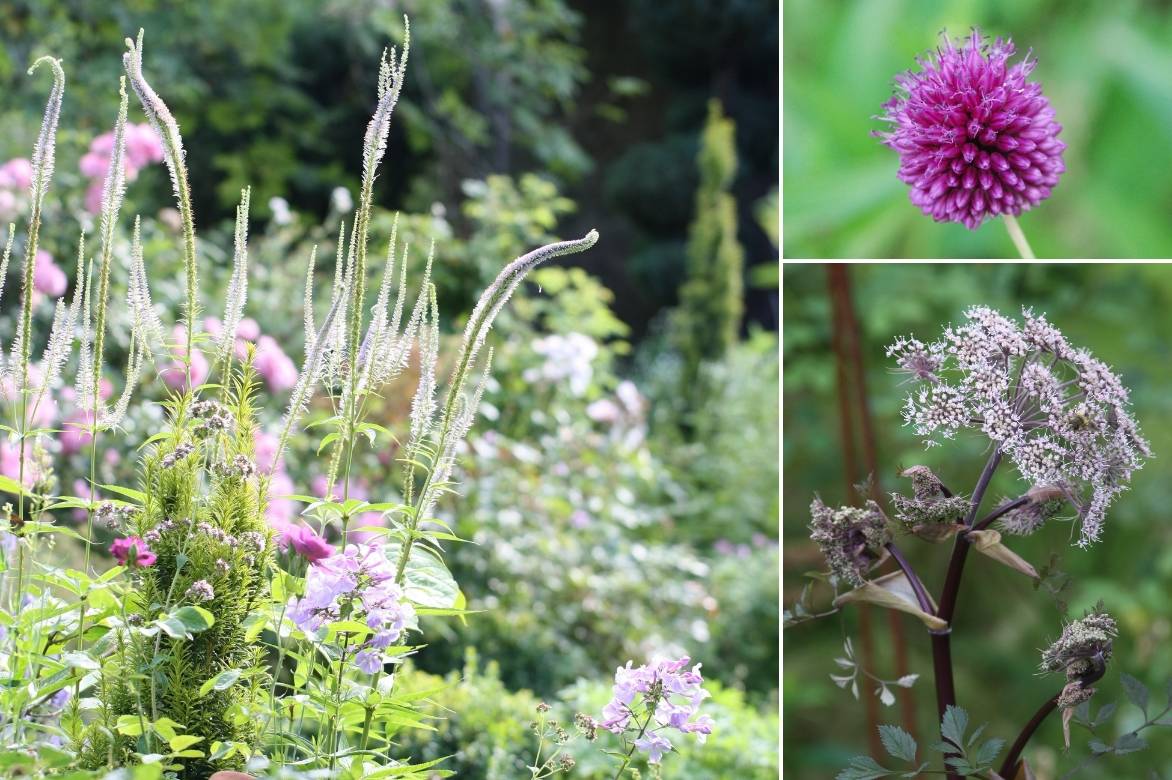
A natural pairing idea: Veronicastrum virginicum var Album, Allium sphaerocephalon, Angelica sylvestris ‘Vicar’s Mead’
In a white garden, mix a few plants of white-flowering angelica with Hesperis matronalis ‘Alba’ or Philadelphus coronarius. It also composes romantic tableaux alongside shrub roses.
In a large, slightly soft-edged border, pair it in an abundant spirit with Oriental poppies, Agastaches, Astrantias, Echinacea, bellflowers, Phlox, Sanguisorba or Knautias. Grasses (Miscanthus, Stipa, Carex) and summer-flowering perennials with a light habit such as Alchemillas or meadow-rues will bring softness and movement as a counterpoint to its globular inflorescences.
In a graphic, contemporary composition, pair it with box balls and phormiums.
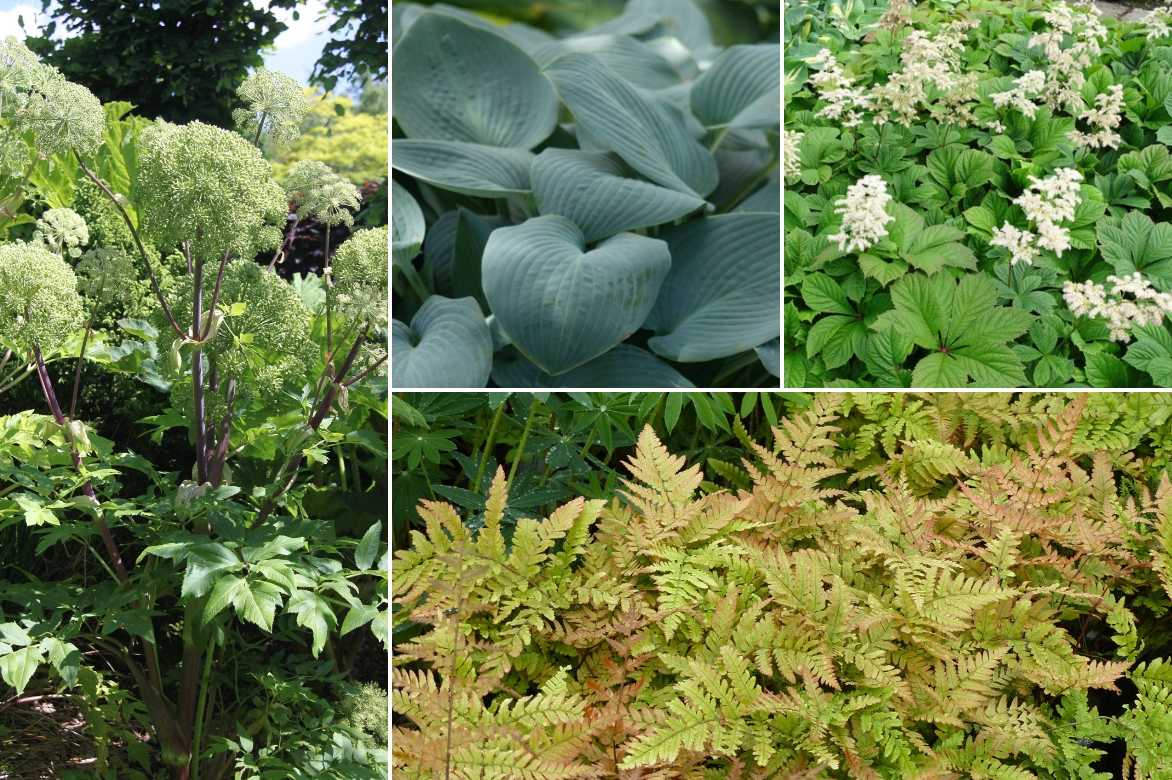
A partial-shade pairing idea: Angelica archangelica, Hosta tardiana ‘Halcyon’, Rodgersia aesculifolia ‘Irish Bronze’ and Dryopteris erythrosora
At the water’s edge, it will accompany airy-flowering perennials such as Astilbes, Filipendulas, goat’s beard, knotweeds or persicarias.
In an understorey, it will tower over carpets of hardy geraniums, Heucheras or creeping bugles.
In the vegetable garden, Angelica will have its place with dahlias and other aromatic plants such as its cousin fennel.
→ Discover other pairing ideas with Angelica in our advice sheet!
Useful resources
- Discover all our aromatic perennial plants
- Find the most beautiful giant perennials here
- Let yourself be seduced by our unique collections of medieval garden perennials and cottage garden perennials
- Subscribe!
- Contents
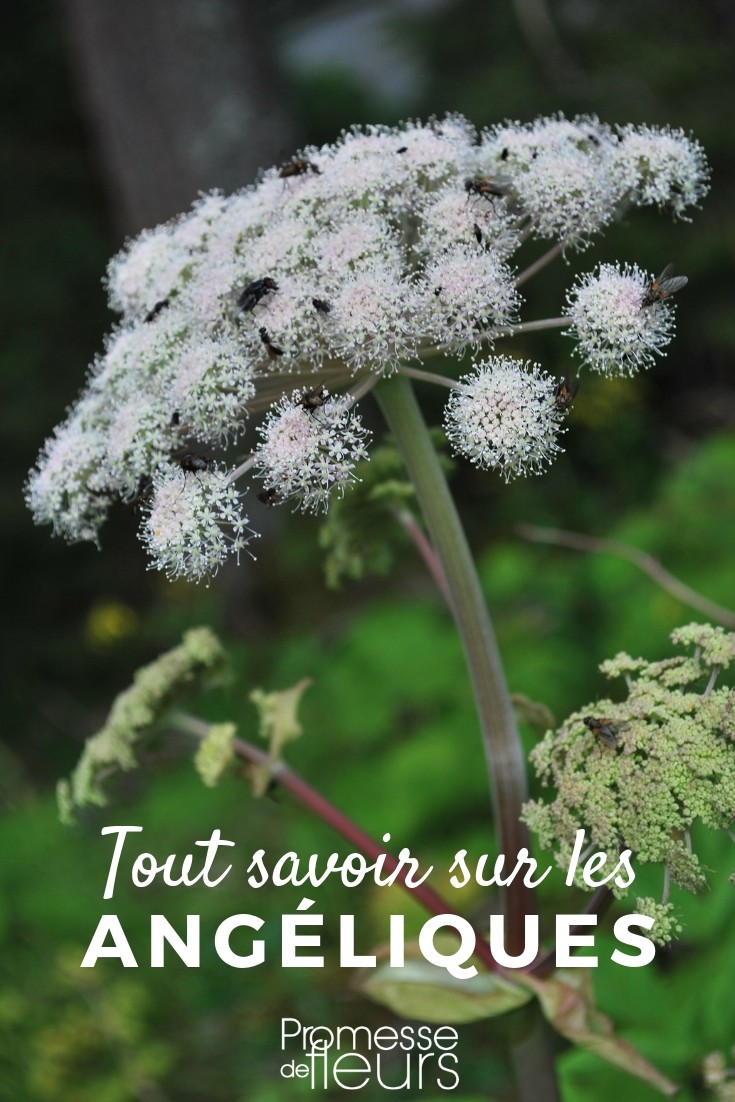

































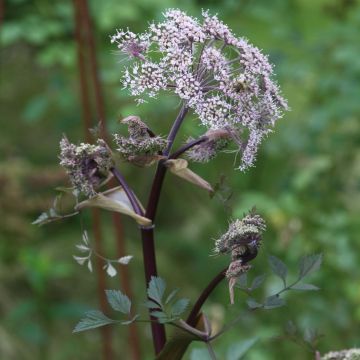

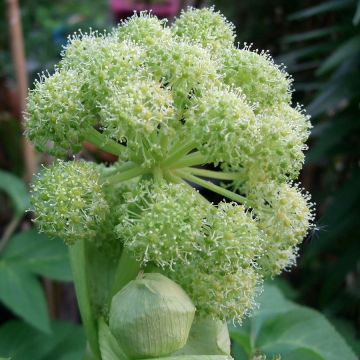
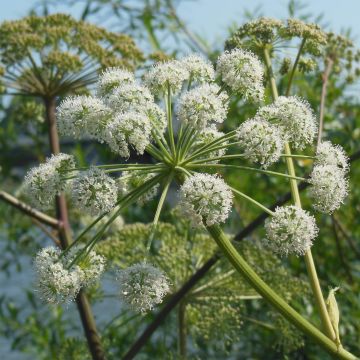
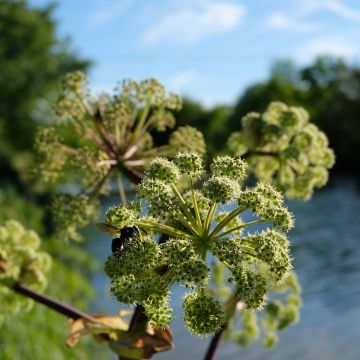
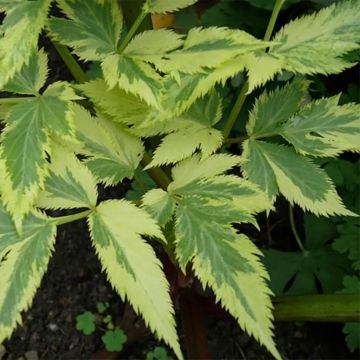
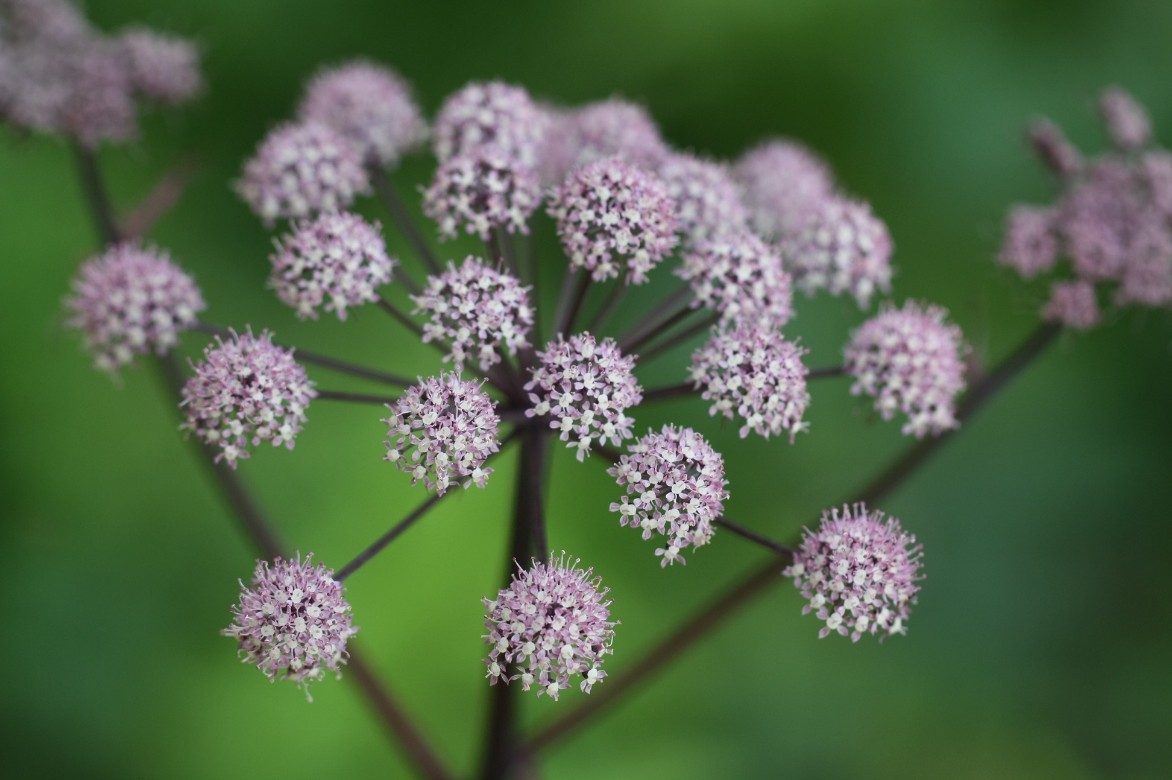
Feedbacks